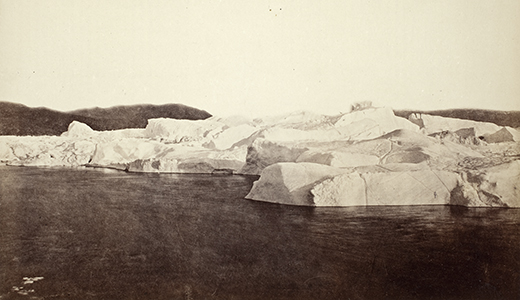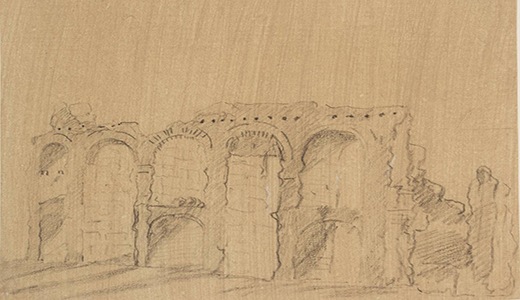 2019
2019
The Coast Blockaded by Icebergs Near Julianes Haab, by William Bradford, 1873. LACMA, The Marjorie and Leonard Vernon Collection, gift of the Annenberg Foundation, acquired from Carol Vernon and Robert Turbin.
Nearly eight thousand gallons of iceberg water were stolen from a facility in Canada this week. The water, harvested from icebergs floating by Newfoundland’s coast, was destined to become vodka. Coveted for its purity—icebergs are so dense they do not absorb salt from the ocean—the stolen water has an estimated value of nine thousand Canadian dollars (nearly seven thousand U.S. dollars). The thieves must have been well equipped; police say they are “looking at either a tanker truck or a tractor trailer.” But what exactly the thieves plan to do with the water is unclear. As The Guardian reports:
An employee at an iceberg water company said the shipment would likely have been contaminated during the transfer, rendering it largely worthless. “Jesus, what are they going to do with it?” he said.
Icebergs have been harvested for water for centuries. It is a difficult and potentially dangerous process—the icebergs, calved from Greenland’s ice shelf, can roll over with little warning—but the water they are formed from is believed by many to be some of the cleanest on the planet. The high labor costs associated with obtaining the ice are part of the reason why the water is so expensive.
 c.
96
c.
96
Aqueduct of Nero, by Richard Wilson. Photograph © Tate, purchased as part of the Oppé Collection with assistance from the National Lottery through the Heritage Lottery Fund 1996 (CC-BY-NC-ND 3.0).
In 9 bc Roman consul Titus Quinctius Crispinus proposed a law to protect aqueducts from theft and vandalism. Anyone who “with malice aforethought pierces or breaks or causes to be pierced or broken, or in any way damages mains, conduits, arches, pipes of any size, reservoirs, or cisterns of the public water supply” would be charged a fine of 100,000 sesterces and forced to pay for any repair to Rome’s impressive water infrastructure. The law did not stop people from stealing water. When Sextus Julis Frontinus was appointed water commissioner by Emperor Nerva in 96, he undertook an extensive overview of the aqueduct system, discovering examples of fraud and theft, as outlined in his treatise On Aqueducts. One method of theft Frontinus called “puncturing”:
There are extensive areas in various places where secret pipes run under the pavements all over the City. I discovered that these pipes were furnishing water by special branches to all those engaged in business in those localities through which the pipes ran, being bored for that purpose here and there by the so‑called puncturers; whence it came to pass that only a small quantity of water reached the places of public supply. How large an amount of water has been stolen in this manner, I estimate by means of the fact that a considerable quantity of lead has been brought in by the removal of that kind of branch pipes.